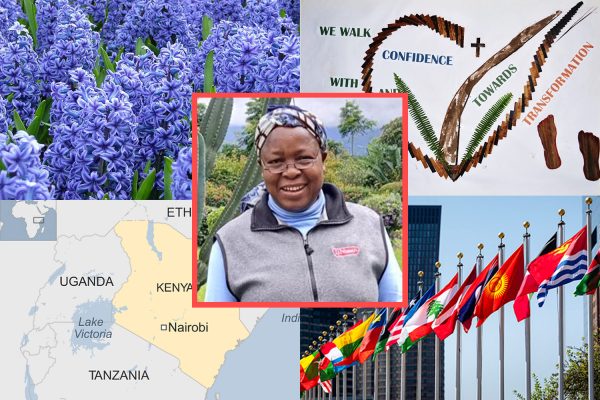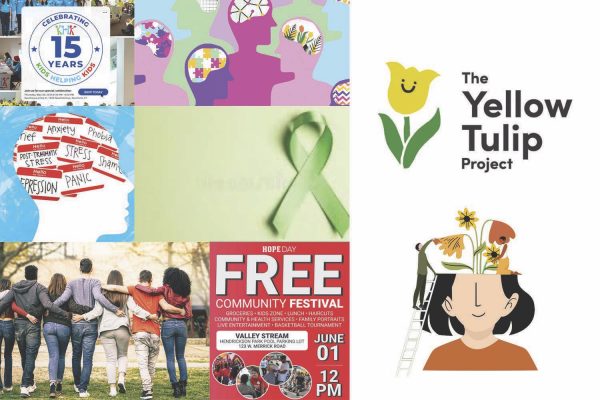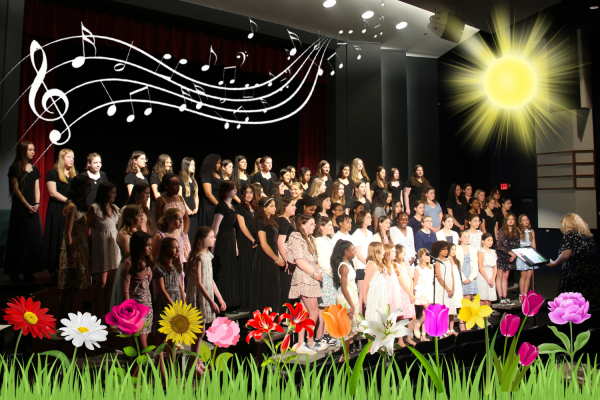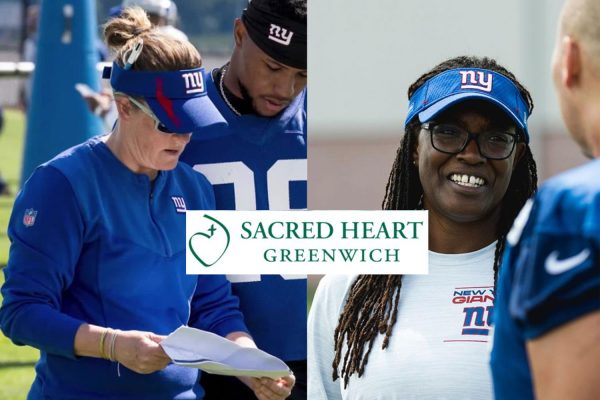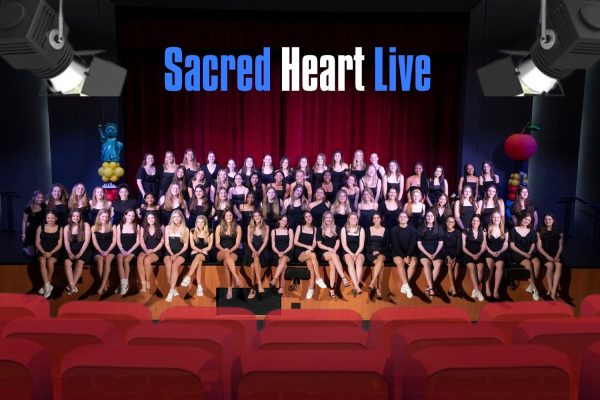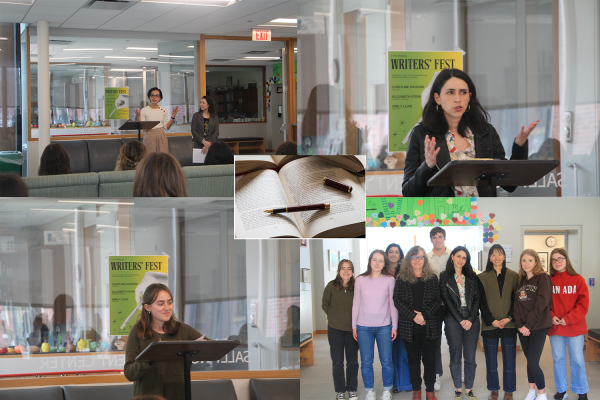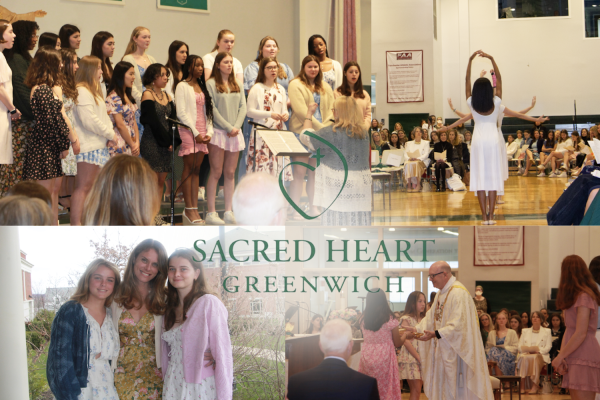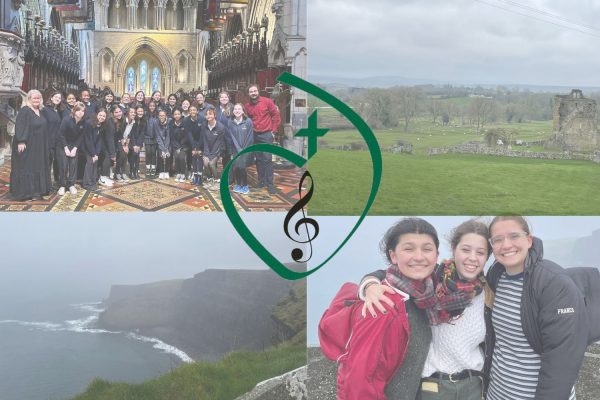Students follow in the footsteps to freedom
During the first week of spring break, 15 Sacred Heart Greenwich students embarked on the first-ever civil rights pilgrimage called, In the Footsteps Toward Freedom: A Civil Rights Pilgrimage. The group spent eight days traveling the country’s south, visiting historical sites and meeting with individuals who experienced the civil rights movement first hand.
The student pilgrims were eighth-graders Katrina Cheng-Slater, Vanessa Torres, and Kristin Morrow, freshmen Mimi Greco, Leah Allen, Kayla Malcolm-Joseph, Zoe Young, and Isabella Stewart, sophomores DJ Green, Sarah Mickley, and Yvetslana Lafontant, juniors Salome Alfaro and Zada Brown, and seniors Nia Foster and Ludnie Rene.
Five faculty members accompanied the students. Mrs. Samantha McCoy, Middle School History Teacher, Eight Grade Lead Teacher, and Middle School Scheduler, Dr. William Mottolese, Upper School English Teacher and Chair of English Department, Mr. David Olson, Assistant Head of School and Head of Middle School, Mrs. Jennifer Rathkopf, Middle School English Teacher, and Ms. Joyce Reed, Middle School Science Teacher shared the experience as pilgrims and chaperones.

Courtesy of Mr. David Olson
At their first stop in Atlanta, Georgia, the group explored sites related to the Reverend Dr. Martin Luther King, Jr. (MLK), such as the King Center and The Martin Luther King, Jr. National Historical Park. The students saw Dr. King’s childhood home, including the room where he was born. The group also attended mass at Our Lady of Lourdes Catholic Church.
The next day, the students visited the Bethel Baptist Church in Birmingham, Alabama. In this church, in 1953, Civil Rights activist Reverend Fred Shuttlesworth sparked the Birmingham civil rights movement by holding meetings and convincing church members to vote and fight for equality, according to britannica.com.
The next stop in Birmingham was the 16th St. Baptist Church where members of the Ku Klux Klan planted a bomb in the church. Four young girls lost their lives when it exploded, according to nps.gov. The group also visited the Birmingham Civil Rights Institute. The Institute displays the jail cell where Dr. King wrote the Letter From Birmingham City Jail. It also showcases one of the buses used in the Freedom Rides, according to civilrightstrail.com.
Later in the day, the group toured the Kelly Ingram Park, the gathering spot for many marches in the spring of 1963. The group concluded their evening by eating dinner at the First United Methodist Church in Birmingham and reflecting on the day’s events.
Vanessa Torres reflected and discussed how visiting various historical locations helped her connect to influential leaders of the past. She also learned to deepen her appreciation of their fight for acceptance and equality.
“I could almost picture the influential figures of MLK and Reverend Shuttlesworth, along with many others, as they rallied the citizens of Birmingham to the cause of equality for all regardless of their skin tone,” Vanessa said. “As we traveled across the city, it is touching to see that their appreciation for one another has never changed.”
Next, the group traveled to Marion, Alabama, visiting Zion United Method Church to deepen their understanding of voter registration efforts. There, they met civil rights foot soldiers, individuals who worked quietly out of the spotlight to fight segregation and other injustices African Americans faced at the time, according to voanews.com.
After exploring Marion, the students continued to Selma, Alabama to meet with the Edmundite Mission, a Catholic organization that provides food, clothing, and shelter to people less fortunate throughout the south.

Courtesy of Mr. Olson
That day, the group also visited the Montgomery Museum where they met Ms. Joanne Bland, the 2017 Dr. Martin Luther King Jr. Prayer Service guest speaker at Sacred Heart. They concluded the third day by walking across the Edmund Pettus Bridge, where thousands of Civil Rights activists once marched from Selma to Montgomery in support of voting rights, according to nps.gov.
Kristin Morrow explained her impression of following the same path thousands of Civil Rights activists marched.
“We walked across the bridge silently, in pairs, which is the same way that the marchers did on Bloody Sunday,” Kristin said. “I suddenly realized how peacefully they were walking, and how the state troopers saw them as such a threat. Would they have seen our group as a threat if we were walking across the bridge in that time period?”
The group began day four by visiting the gravesite of Mr. Jimmie Lee Jackson, a Civil Rights activist from Marion, who was shot and killed in 1965 by the Ku Klux Klan in Selma. They continued their day by visiting the Brown Chapel in Selma where marchers prepared for their journey from Selma to Montgomery during Bloody Sunday.
Once the students arrived in Montgomery, they went to the City of St. Jude, a 36-acre campus that brings “light, hope, and dignity to the poor,” according to revolvy.com. During the civil rights era, it was a campsite for thousands of marchers that arrived in Montgomery.
Senior Ludnie Rene talked about how experiencing the history of the marches helped her understand why these individuals risked their lives for equality.
“On this fourth day of our journey, we saw the painful history of a people who transformed their suffering into courage, bravery, strength, and unity,” Ludnie said. “They were the true beloved community that Dr. King so passionately dreamed of and we seek to bring this dream to life in our school, our community, and the world.”
As they explored Montgomery, the group visited Troy University’s Rosa Parks Museum and Library to watch a reenactment of Rosa Park’s arrest on the Montgomery city bus. The students also learned more about Dr. King’s successful bus boycott.
As the day continued, they visited the National Memorial for Peace and Justice. The exhibit showcases the history of lynching in the United States. There are 805 memorial stones in the exhibit. Each one symbolizes a county in the United States, where a lynching occurred. There were more than 4,300 victims in the United States, and on each stone is the name and date of each lynching. Each county where a lynching occurred can claim its box and install it somewhere within their county, according to museumandmemorial.eji.org.

The students left Alabama and ventured to Jackson, Mississippi. Their first stop was the home and assassination site of Mr. Medgar Evers, a Civil Rights activist. The day before the group’s visit, it was named a historical site, and the girls were among the first visitors to view it with the new official title. Because of its recent renaming, a news crew was on hand and interviewed Ludnie and Nia in addition to Mrs. McCoy.
Kayla reflected on this particular visit and explained how she is thankful for people like Mr. Evers who fought for equality, even when they did not experience the freedom themselves.
“Even though Medgar Evers did not live to see the days where his hard work began to pay off, his story was able to inspire a movement to finish his work showing that justice will always prevail,” Kayla said.
They moved on to the Mississippi Civil Rights Museum to meet Mr. Hezekiah Watkins who spoke of his experience during the civil rights movement as a Freedom Rider.
For the group’s last day, they visited the National Civil Rights Museum in Memphis, Tennessee, the location of Dr. King’s assassination in 1968. The trip came full circle at this point, as they began at the birthplace of Dr. King, traced his footsteps to major events in his life, and concluded at the place of his death
Dr. Mottolese discussed his hopes for the girls who attended the pilgrimage and the effect this trip would have on them.
“In Jackson, Mississippi almost 60 years ago, a great human being was murdered under his carport while his wife and children watched,” Dr. Mottolese said. “In Memphis, another great man was assassinated on a motel balcony. The ripples from those events and thousands of others large and small are still expanding outward through a troubled nation craving community. Our young women of the Sacred Heart are riding those ripples home and, I suspect, will be riding them for the rest of their lives.”
Featured Image by Shantel Guzman ’19

